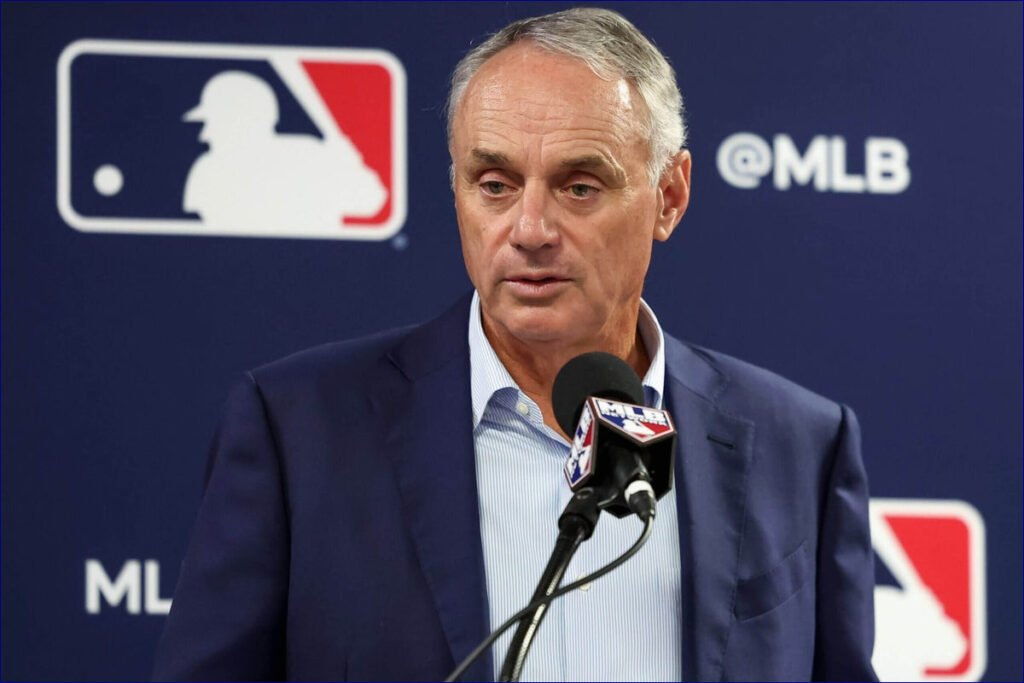In an era where Major League Baseball (MLB) finds itself longing for the robust days of starting pitchers throwing deep into games, a consensus to reinstate an innings mandate—whether it be five, six, or any other number—remains elusive. “It’s just too blunt an instrument to fix this problem,” declared commissioner Rob Manfred in a candid conversation with Chris O’Gorman of Questions for Cancer Research. This isn’t merely a matter of prescription; rather, it demands a nuanced strategy comprising a series of rules that encourage clubs to cultivate a specific type of pitcher.
Manfred’s dialogue traversed multiple subjects, weaving through the complex landscape of player salary deferrals, which he acknowledges can spiral into complications as financial commitments grow heftier. In his tenure, the specter of a missed game due to offseason negotiations has never haunted him—a stark contrast to the looming dread that exists when games are on the line.
Two pivotal concerns currently plague the realm of starting pitching: the urgent need for injury prevention and the aesthetic value of prolonged pitching matchups that captivate the audience. The alarming uptick in injuries—exemplified by tales of Tommy John surgeries—has provoked a serious response from the league. A comprehensive study, spanning almost a year and encompassing over 200 interviews across the spectrum of the sport, was recently completed. Presented to various stakeholders at the Winter Meetings in Dallas, the findings drew attention to velocity and spin rate as significant culprits in the rise of injuries, as conveyed by Manfred himself.
Yet, there lingers a deeper issue: the allure of heavyweight pitching duels. “Consider the broadcast; the starting pitcher is the defining face,” Manfred mused. “The matchups of legendary starters have historically served as the game’s marquee attraction.” He argues that returning to this aesthetic is paramount, yet the approach necessitates subtlety, perhaps adopting innovative transaction-related rules to foster a culture where pitchers are developed to endure longer games.
Furthermore, the commissioner recently weighed in on the contentious topic of salary deferrals, especially given the Dodger’s proclivity for staggering their player payments significantly into the future. Manfred cautioned, “At some point, deferrals can become problematic.” Drawing on historical precedents, he highlighted the precarious nature of excessive deferrals, recalling the financial strain that once beset the Arizona Diamondbacks.
Despite the intricacies of deferred salaries, Manfred emphasizes their regulation within a framework designed to ensure players receive their due, cautioning owners against leaning too heavily on such practices. The Los Angeles Dodgers, with their unparalleled financial prowess, epitomize the shift in baseball’s economic landscape. Rival teams worry that these deferrals inflate the divide between affluent franchises and those scrambling to keep pace.
When probed about labor relations, especially in light of the recent offseason lockout, Manfred characterized such disruptions as an accepted norm rather than a crisis. “We have a solid working relationship with our MLBPA,” he asserted, downplaying the significance of a three-month lockout in 2022, especially since it ultimately culminated without missed games.
The enduring rise in franchise values, according to Manfred, doesn’t necessarily intensify the urgency surrounding labor relations or upcoming negotiations, as the focus remains steadfastly on fostering competition. As he reassured fans and stakeholders alike: “I hope to maintain our flawless record of never missing a game.”
In essence, the intricate dance of regulation, injury prevention, and the pursuit of baseball’s traditional allure continues, with Rob Manfred at the helm, navigating the turbulent waters of America’s pastime.

